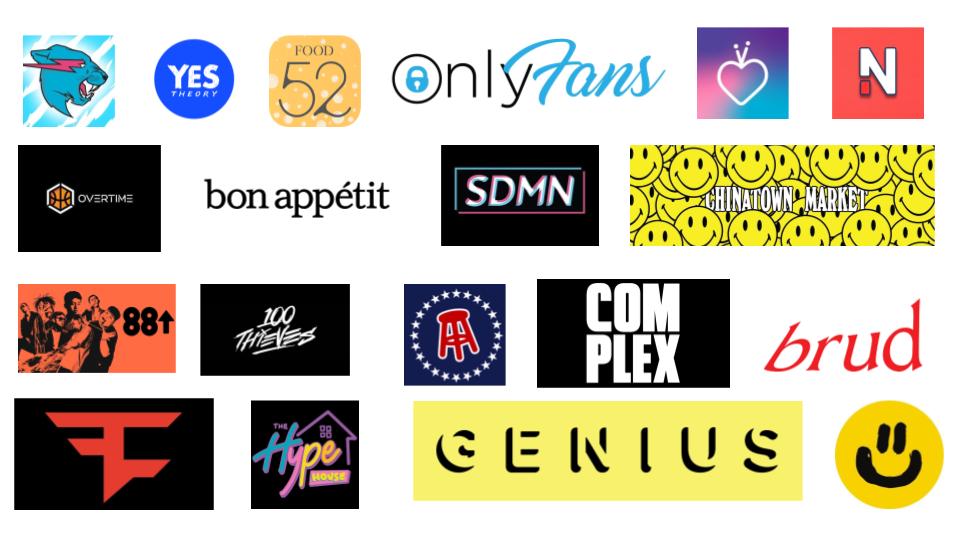Contents:

How Nancy Whiteman Bootstrapped a $25M Cannabis Edibles Business | Trends by The Hustle
You can trace a direct line between today’s massive cannabis gummies market and Nancy Whiteman.
Whiteman, an entrepreneur from Colorado, was working as a marketing consultant before she launched a bootstrapped company she took to calling Wana Brands in 2010.
She didn’t have a culinary background. Honestly, before 2010, she didn’t even know that cannabis-infused products existed. But in the past decade, she has spun a decentralized edibles market teeming with off-kilter experiments — THC-infused pizzas and baklavas were not unheard of — into a juggernaut with $25m in annual revenue.

Trends Year-In-Review Quiz | Trends by The Hustle
Think you know your Trends stats? Try our 5-question quiz, which draws on some of our most popular posts, covering everything from collectible auctioneers to the boring business that mints billions (trade shows).

The Future of Media & Pop Culture: 30 Companies Shaping the Media Landscape
This presentation was put together by Trung Phan. Send questions or comments via email or Twitter.
It was inspired by Blake Robbins’ Twitter thread highlighting the companies shaping the future of media & pop culture.
Blake is a partner at early-stage venture fund Ludlow Ventures. Follow him on Twitter and subscribe to his newsletter on Substack.
Trends subscribers can download a PDF of the presentation here.
***

Blake’s Original Tweet Thread

Slide Deck Contents Page

A Snapshot of the 30 Companies


***
Company Analysis
***

1. David Dobrik
Recreating Friends & becoming Jimmy Fallon for Gen-Z


AMAs with Founders | Trends by The Hustle
The most successful people in the world don’t get there alone. We believe strongly in learning from the success and failures of one another. So, every so often we bring in someone that we think has unique insights — whether they founded a huge business or deeply understand a problem that many of us face. We’ll continue to invite inspiring people to share their stories, and give you an opportunity to interact with them directly. We’ll update this page with any future AMAs, and welcome your suggestions of other people we should talk to (email brad@thehustle.co with your ideas).
Benjamin Witte, founder of Recess
Read if you want learn about building a strong consumer brand without much paid marketing, effectively using omni-channel marketing, and regulatory problems related to the CBD industry.
Jack Smith, co-founder of Vungle
Read if you want learn about the next evolution of advertising and social media, cofounder relationships, early-stage acquisition, and how to build a cohesive story when raising venture capital.
Matt Kepnes, AKA Nomadic Matt

PR Strategy Guide For the Solo Founder | Trends by The Hustle
Now more than ever, it’s important to understand how PR works — and how you can use it to your advantage. So we put together a brief PR Strategy guide to show you the way.
Read on for tips, tricks, and resources from 4 expert sources who have helped clients get their products featured in publications like The New York Times, Forbes, and other national outlets. With the help of these experts, several of whom are active contributors in the Trends community, some companies have scaled to $1m+ in sales in just one year without spending a penny on advertising.
Follow this step-by-step guide to learn how to acquire “earned” (AKA free) media pick-up for your product or service. We encourage you to read our whole report, but feel free to click through to the section that interests you most:
- Step 1: Understand Your Audience
- Step 2: Build Your Media List
- Step 3: Share Your Story
- Step 4: Rinse & Repeat
- Tools & Templates
Meet Our Experts:

Need Help Launching a Business? This YouTube Host Has Answers | Trends by The Hustle
Doc Williams has helped hundreds of people launching a business. The self-described “solutions architect” (AKA digital marketing expert) has worked with everyone from powerful NFL agents to VaynerMedia.
In the early days of the pandemic, he realized that many people needed advice on how to pivot. So — using his skills as an entrepreneur, live streamer, and consultant — he started a nightly streaming show called “Build With Me” to help founders launching a business get their ideas off the ground.
“People have asked me — they like my videos and tutorials,” he told me last week. “I was like, ‘Let me just do this live. I’ll do what I do anyway, I’ll just record it.’”

4 Futurists Break Down Post-COVID Opportunities | Trends by The Hustle
In the early days of the coronavirus pandemic, we’ve turned to all kinds of people — including virologists, Ph.D.s, and market analysts — to explain the challenges we face in the present. But who can help us better understand the next-order effects of this crisis?
One answer: Futurists, professionals in a variety of fields who, through rigorous analysis and research, make projections about what the world might look like someday. Futurists aren’t prophets, but they offer a unique perspective on navigating uncertainty.
Our analysts and writers spoke with a number of prominent futurists, focusing on how COVID-19 might impact various sectors in the short- and long-term. A few takeaways:
- A hitch in global trade could inspire a localism movement in various sectors like tourism, shipping, and production.
- We might see an uptick in 3-D printing and other self-sufficiency tools.
- The crisis could accelerate the intersection of AI and biology.
- Educational content on immersive platforms (VR, MR, XR) is poised for growth.

Futurist Q&A: Amy Zalman on the Rise of Localization | Trends by The Hustle
Where is the unseen opportunity in a post-COVID world?
Opportunity generally is somewhere at the intersection of where nobody else is looking and change.
I think that virtual reality will get a boost from online platforms. Creative thinking around hybrid opportunities for meeting, and anything that starts with “tele” — telemedicine and the like.

Futurist Q&A: Bryan Alexander on the Future of Colleges and Universities | Trends by The Hustle
When you look across industries, which sector do you foresee this crisis affecting the most over the next 10+ years?
I think the industry that will undergo the biggest change will be science.
If we manage to get this under control, it might be that we see science enjoying a greater reputation [and more government funding for R&D projects].

Futurist Q&A: Amy Webb on Reducing Deep Uncertainty | Trends by The Hustle
What is your job as a futurist?
A futurist is somebody who confronts and reduces deep uncertainty using (in my case) data and modeling.
Most organizations we work with are seeking advice on something particular, like “Where will there be disruption in the global supply of food, and what do we do about it?” Or, “What does the future of broadcast entertainment look like?” Or, “What are the possible futures of transportation?” Things like that.